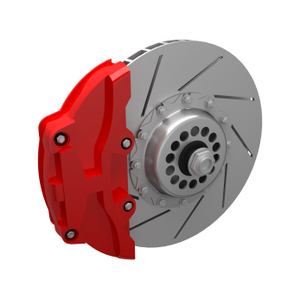Aside from a spot of rust or two…a brake line rusting away is a sure indicator that your vehicle is under assault by time and the elements.
A vehicle manufacturer can find the hardest places imaginable to hide a brake line during assembly. My truck was barely five years old when one day the brakes simply went away. A glance under the bed showed a growing puddle of brake fluid and I knew what had happened.
A broken brake line is NOT a really severe problem to repair however. In fact, if you know what you are doing..it is quite easy. The repair can last for many years as well.
In my instance I took some tubing cutters, and if you have ever done any copper plumbing you will know what this tool is..and I removed a small piece of this rusty brake line and took it with me to the auto parts store. The piece I cut off was relatively rust free and this is important if you plan to repair or replace some brake line. You want to be sure the parts you are going to be getting will fit properly..and you need a good piece of line to do that.
At the auto parts store I told the clerk I needed some compression fittings that would fit on the piece of line I had brought with me. I also told him I would need several lengths of steel brake line as well. The idea behind taking a piece of line with me is this: It guarantees I get a new line of the diameter I need for this particular vehicle…and it also makes sure that the compression fittings I will be getting will fit all lines..old and new. This requires that you open the package of compression fittings in the store and see if they will fit the new line and the piece of line you brought with you of course.
This line under my truck which had broken, was nearly buried up in the frame. To tease it out to where I could work on it would no doubt cause more damage to an already perforated with corrosion steel line, and this in turn would no doubt cause me to make yet other trips for parts. It was an easy decision on my part for me to simply replace the entire line from master cylinder to rear axle where the lines divided to serve both wheel brakes.
Steel brake line comes in several pre-cut lengths. One foot, two foot and 3 foot lengths. Each piece has a threaded fitting on each end that will mate up to your existing brake system. From master cylinder to rear axle on my truck is roughly nine feet give or take. I got three of the three foot lengths of steel line and a sufficient number of compression fittings.
Now..just what is a compression fitting? If you look at a new piece of steel brake line you will notice that the ends of that line are flared. This flaring is to insure that the end of the line, once it is inserted in the proper fitting, will serve to seal the line once you have tightened down the nuts. But what if, like me, you break a line that is buried up in the frame and to move or disturb it..will just break more of the line..as it is already corroded? And the break is about mid way between fittings? Then, you have a problem.
You could dig out that line..breaking and bending all the way until you had it out. You could carefully attempt to disconnect the mangled line from it’s fittings…go get a new length of line and then attempt to re-connect everything…and all this time of course…you have been lying on you back under your vehicle in who knows what kind if weather or location you happened to break down in.
I prefer an easier alternative. That alternative is the compression fitting. Now, compression fittings are NOT standard repair parts. They CAN leak. And if we are talking about a brake line..you COULD lose your brakes again. However, and that said..the fittings I used to repair my truck are STILL on there..and it’s been 11 years now.
Back at the house again I pop the hood and dive into this repair project. I take the tubing cutters again and carefully tracing the lines from the master cylinder, I determine which line is going to the rear of the vehicle as that is the one that broke. Finding the correct line..I measure down from the master cylinder about six inches..and cut the line cleanly with the cutters. I then go under the truck and find where this line I have just cut terminates at a divider fitting. This fitting is mounted on the rear axle and simply accepts the line from the master cylinder and then allows a separate line to split off to each wheel. I disconnect the fitting coming into this divider from the master cylinder and lop off the end to get it out of the way. It is now so much rusty metal.
It is now time to run my new line. I take one of the three foot lengths of steel line and looking at it closely I notice that the fittings attached to this line are of two dissimilar types. One fitting is clearly intended to fit into my divider, and I quickly thread it into the correct hole and tighten it down. The fitting on the other end is different and intended to thread into a different type of junction. A junction I don’t have and don’t need. HERE is where you need a compression fitting. A compression fitting is used to attach together two pieces of steel line, that are NOT flared. It does this with a brass fitting, into which the line is inserted, two ferrules and two nuts. If you insert the end of the line into the fitting, slide the ferrule up into that same fitting, and then torque down that nut…the ferrule will crush/expand…and form a liquid and pressure tight connection. I took the tubing cutters and lopped off the unneeded fitting of the line I had just connected. I took a new piece of line and lopped off the end of it, and this allowed the fittings on that line to both slide off. I am now ready to use the compression fittings to attach these two separate and non-flared lines together.
I repeated this process until I had the new lines all fitted together and routed until it came out near my master cylinder. It was an easy matter of cutting the line to fit, attaching the compression fittings and the line replacement was pretty near complete. But it is not a good idea to have something so critical as a brake line just dangling and bouncing around under your vehicle. There is after all a reason why the manufacturer felt it was wise to affix those lines so that are near immovable. That reason is flex and stress. The solve this problem required another trip under the truck and I took with me a hand full of zip ties. Every few inches I would wrap a zip tie around the line and some part of the under structure of the vehicle. This served to remove all flexing of the line while the vehicle is moving.
So, the line is replaced and I am left with a vehicle from which over half the brake fluid is now missing having drained out when the original line was broken. Time to fix that as well. The best way to fill a brake system in which air has gotten in, is to start at the wheel the farthest away from the master cylinder. This way you bleed each wheel in succession, removing air from the farthest wheel to the nearest. This insures complete removal of air in the line. This would be in order of succession, the right rear, the left rear, the right front and then the left front. In my case, I just needed to bleed the two rear wheels so I started at the right rear.
I filled the master cylinder reservoir with fresh clean brake fluid to get things going. I then opened the bleeder valve at the right rear and attached a hand operated vacuum pump. You squeeze this handy little tool a few times and it sucks brake fluid right down the line from the master cylinder. Be sure and keep a close eye on the master cylinder reservoir too..you don’t want to empty it..or you will have to start over. It doesn’t take long to bleed a brake system when you have the right tools. And I was soon able to move over to the left rear and repeat the process there.
The job finished it was time to test drive my old truck. This thing is 16 years old now and I suspect without a number of jury rigged repair applications it would have wound up on the junk heap quite some time ago. And, being somewhat stingy, I would much rather repair a vehicle if I can, rather than empty my pockets paying for a newer model AND the exorbitant cost of full coverage auto insurance.



